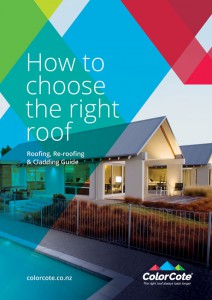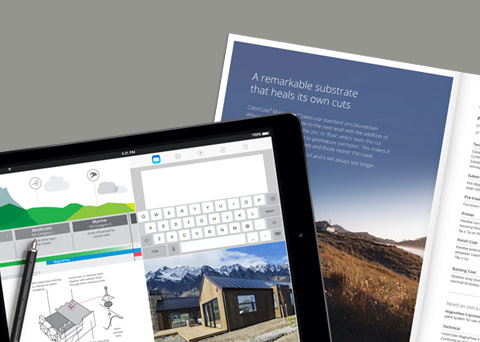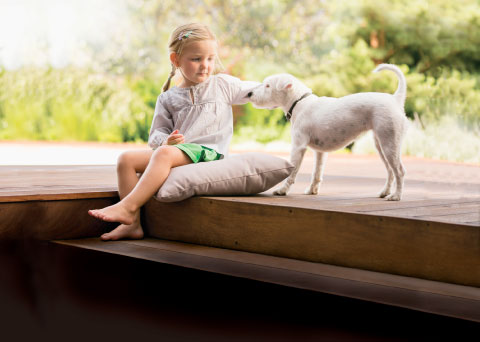Thoughtful design will prevent future issues
Design, pitch and aspect
In addition to the environment, the design, pitch and aspect of the house can also dictate which ColorCote product should be used.
For example, a house with a minimum pitch roof with parapets two kilometres from the surf may still require AlumiGard.
The same house with a steeper pitched roof (which allows rainwater to wash off the worst of the salt residue) may be able to use ZinaCore for the roof but may need AlumiGard for the cladding.
In severe marine environments care needs to be taken with cut edges and penetrations – including screw holes – to prevent the spread of corrosion.
Good design can avoid issues
Overhangs create unwashed areas
The design of your house will affect the life of your pre-painted roofing and cladding. Avoid overhangs and designs that create unwashed areas. These are not naturally washed down by rainwater allowing dirt, salts and other corrosive elements to build up.
You also need to think of how the roof is going to be maintained. All roofs need to be washed down on a regular basis so you need to think of how you are going to access the roof. If the pitch of the roof is too steep to walk on safely you might have to hire a cherry picker or crane every time maintenance is required.
Orientation
Orientation of the roof is important too, particularly in severe environments. It is important when looking at the aspect of the roof that the metal profile is protected from the effects of salt-laden air being driven in from the sea under the roof profile and accelerating corrosion. In severe and very severe environments it is also important that the right roof profile is chosen.
Spouting, valleys and low pitched roofs
The spouting profile needs to be correctly fixed to prevent corrosive wind-driven water and salts being driven up under the sheets of roofing and causing possible early product failure.
Spouting, valleys and low pitched roofs also need to have the correct fall to prevent ponding which can accelerate potential corrosion.
If anything in this section pre-empts a potential issue talk to your architect, builder or roofer, or contact us.
Download: How to choose the right roof?
Everything you need to know about roofing, re-roofing, roofing design and how atmospheric conditions can affect your roofing warranty, is in this brochure.
Maintenance helps longevity
All roofing and cladding products require regular maintenance to keep them looking good, to prolong their life and to meet the terms of any product warranty.
The best way to reduce the amount of maintenance required is to pick the right product for the environment. The extremes of temperature, harsh UV rays and salt-laden sea air all eventually take their toll on all New Zealand buildings.
The harsher the environment the more important it is that a regular maintenance schedule is followed – particularly regular washing down of roofs and cladding – to maximise service life and appearance.
Minimum maintenance requirements
- Washing of naturally unwashed areas at least every 6 months.
- Removal of debris from gutters every 6 months.
- Any noticeable buildup of salt deposits and/or other contaminants are removed when identified.
- When considering overpainting please consult with your local distributor to ensure correct procedures are undertaken.
- Inspection of the roof, including fasteners, repair any damage every 6 months.
Find a roofer
Here you’ll find a list of distributors and approved ColorCote installation contractors.
Technical Info
It’s important to know which metals should never touch, to protect both your roof and your warranty.



